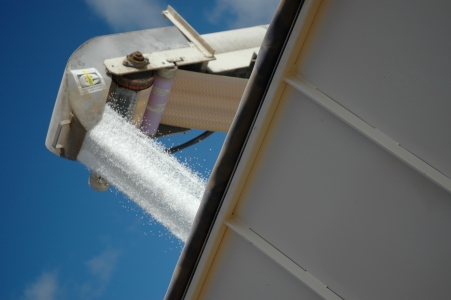
Researchers are using crop sensors, machine learning technology and publicly available data to develop tools that could reduce the guesswork for Australian wheat growers when making in-crop fertiliser application decisions.
Nitrogen (N) fertiliser is one of the biggest input costs for grain growers and mid-season N decisions are crucial for effective crop management and grower profitability.
Tools and decision aids have previously been developed to help inform N application decisions, but most rely on assessments based on crop plant tissue analysis mid-season and it can be difficult to identify N requirements across a paddock.
In a recently released Grains Research and Development Corporation (GRDC) video available on the , CSIRO postdoctoral research fellow Jonathan Richetti discusses sensor technology field trials and promising findings the team has achieved so far.
Dr Richetti is one of the researchers involved in the Future Farm project, which aims to increase profits for Australian grain growers via practical applications of precision and digital agriculture.
‘Future Farm: Improving farmer confidence in targeted nitrogen management through automated sensing and decision support’ is a co-investment by GRDC and its partners including the CSIRO, Queensland University of Technology, the University of Sydney, University of Southern Queensland, and the Victorian Department of Economic Development, Jobs, Transport and Resources.
In particular, the project is re-examining and improving the way in which soil and crop sensors are used to inform decisions about input management.
It aims to provide a way of automating the process from the point of data acquisition, through to analysis and the formulation and implementation of decision options.

The initial focus is on improving the efficiency and profitability of applied N.
Dr Richetti told the 2020 GRDC Grains Research Update in Perth that, in a study of crop canopy indices obtained from crop sensing and analysed using machine learning, two indices were accurate predictors of whether more N needed to be applied to wheat crops.
Other members of the project team are working on using the sensors to identify how much N to apply.
The field trials are being conducted across 11 growers’ paddocks in Western Australia and South Australia, all with different management, weather and soil conditions.
Paddocks included an ‘N minus strip’ (zero or close to the minimum amount of N at sowing), a ‘farmers strip’, with the amount of N fertiliser applied by the grower, and an ‘N rich strip’ providing unlimited N for the crop.
Each strip was scanned with sensors measuring light reflected from the crop and leaves were cut and tested to verify their actual N content. The data collected using the sensors was analysed with machine learning technology (which extracts insights from large datasets) and compared with the actual N content.
“We found the most important canopy index tested was the ‘red edge’ wavelength, followed by ‘simplified canopy chlorophyll content index’ (SCCCI),” Dr Richetti said.
“We incorporated those two predictors into a model to identify which parts of the paddock required nitrogen fertiliser to be applied after the crop was scanned with the sensors.
“In line with industry standards, crop plants containing nitrogen levels of less than 4 per cent at Zadoks growth stage 31 were to receive nitrogen and plants containing nitrogen levels greater than 4 per cent did not receive nitrogen.
“When tested against laboratory data the model accuracy was 96 per cent, meaning the model correctly determined 96 per cent of the time if the wheat was stressed and needed more N applied.”
The research is continuing this year and Dr Richetti said the aim was to combine this work with other research being done by the Future Farm team and develop a prototype process for aiding N decisions – using multiple types of input data and novel analytics.
“The ultimate goal of the project is to bolt everything together – machine learning, crop modelling, crop sensors, satellite data, weather data, weather forecasts and soil information – to estimate the optimal amount of nitrogen required in different parts of a paddock.”
In addition to the , more information about the research can be found in the GRDC Update paper ‘‘ which is available on the GRDC website. Information is also available in the Update paper ‘‘.







